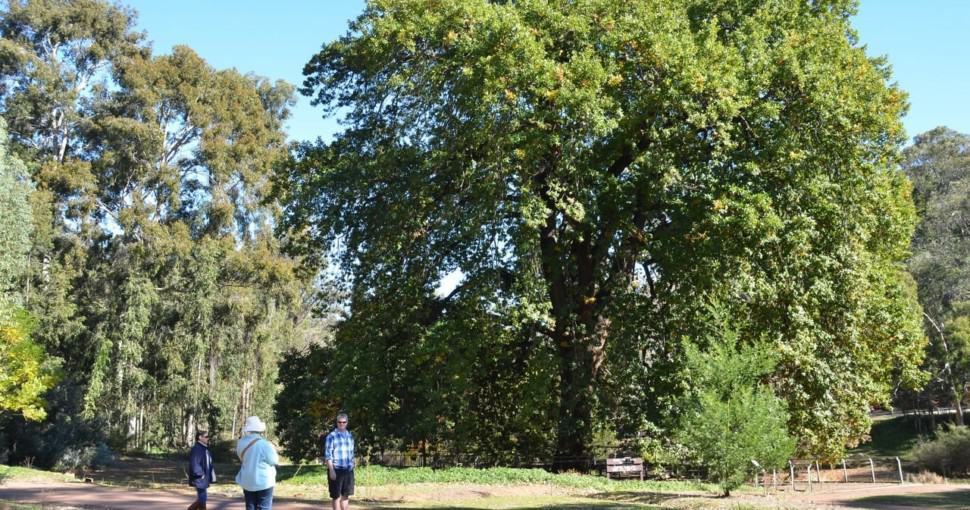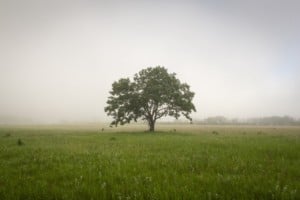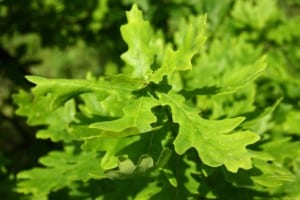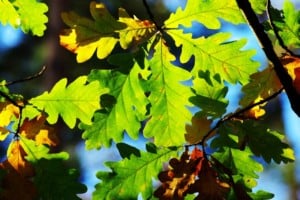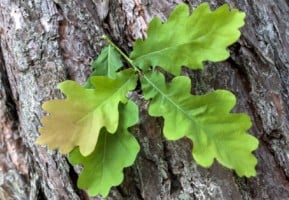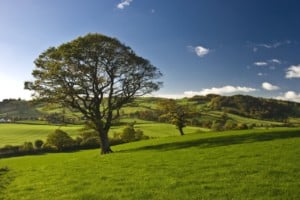Did you know that there are over 600 Oak species in the world? Oaks are part of the Quercus genus. They can be evergreen and deciduous. These trees are impressively durable and well-known for producing edible fall acorns. Read on to discover some attractive types of Oak Trees that you can grow in Australia!
Contents
Australia is blessed with warm to hot, humid summers that are ideal for the proliferation of acorn-bearing Oak Trees. The country is home to a wide array of Oaks, including Algerian Oak, Red Oak, Turkey Oak, Pin Oak, and more. The acorns produced by these trees are an exceptional life source for a wide variety of wildlife, including deer, squirrels, birds, bears, cows, geese, small rodents, and more.
Some Oak Trees even produce sweet acorns that you can pluck from their sturdy branches and eat as is. However, most types of Oak Trees don’t produce a prolific crop until they are about 25 to 30 years old. This waiting time does not seem like a lot when you consider that these hardy trees live for more than 200 years!
Oak Trees also feature distinctive barks that have varied colours, including white, black, red, and greyish-silver. They also have attractive, large leaves that often turn gorgeous shades of red and yellow in fall. Many Oak Tree varieties are quite sought-after in the timber industry thanks to their durable wood which is used in producing many wooden products. These include posts furniture, flooring, drums, wagons, ships, wine barrels, and more. The wood is often split to create durable baskets.
Here are the most common types of Oak Trees in Australia:
1. Red Oak (Quercus Rubra)
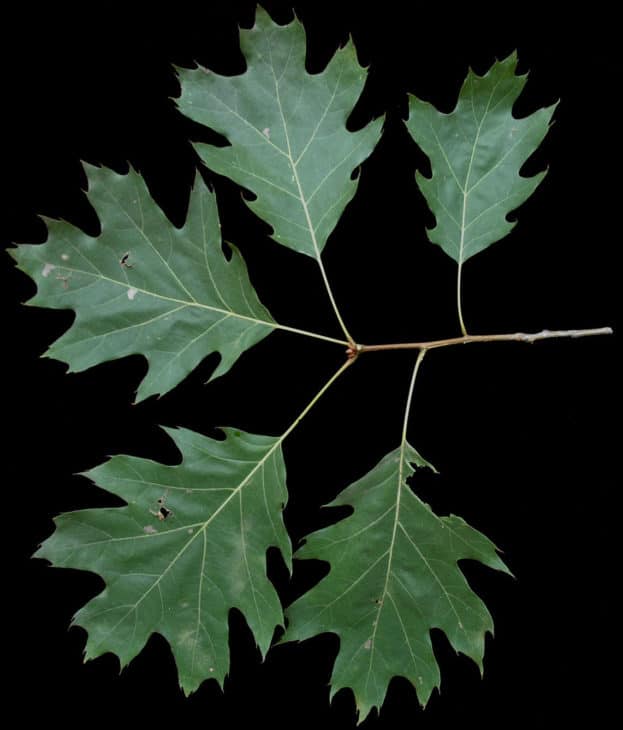
Red Oak is a deciduous, 50 to 75 feet tall tree with a broad-spreading, irregular habitat. This tree has lustrous, lobed, sharp-edged, dark green leaves that develop a brownish-red hue in autumn. It produces rounded acorns with flat-saucer-shaped cups. Red Oak is a durable tree that thrives in medium moist, well-drained, fertile, acidic soils and sun-kissed locations.
2. Sawtooth Oak (Quercus Acutissima)
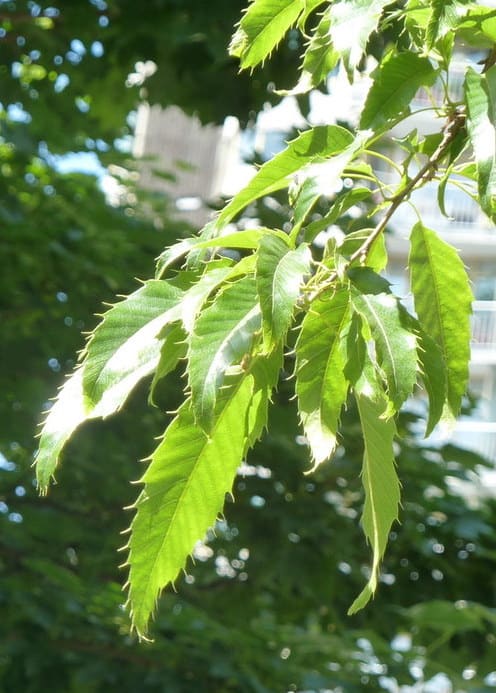
Native to Japan, Korea, and China, Sawtooth Oak is a 40 to 60 feet tall, deciduous tree with a rounded, broad-spreading crown and greyish-black bark. It features glossy, chestnut-like, oblong to lance-shaped, dark green leaves that turn attractive golden brown in fall. It produces non-showy, yellowish-green blooms that give way to abundant oval-shaped acorns with spiny, scaly cups. These heat-tolerant trees thrive in medium moist, rich, humusy, well-drained soils and sunlit areas.
3. Algerian Oak (Quercus Canariensis)
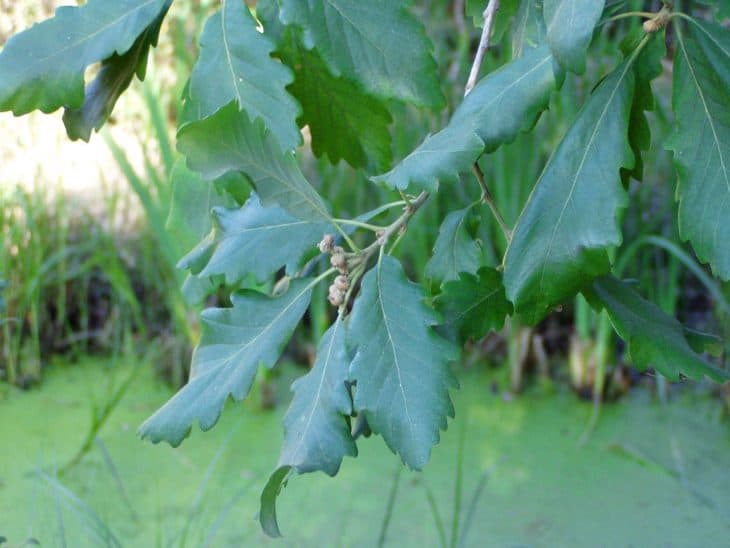
Also known as Mirbeck’s Oak, Algerian Oak is a 40 feet tall, deciduous tree with an initially narrow crown that matures into a broad-rounded shape. It’s decked with glossy, dark green leaves that persist well into winter. It also produces insignificant, yellowish-green blooms, followed by acorns. This fast-growing tree thrives in a wide variety of moist, well-drained, fertile soils.
4. Turkey Oak (Quercus Laevis)
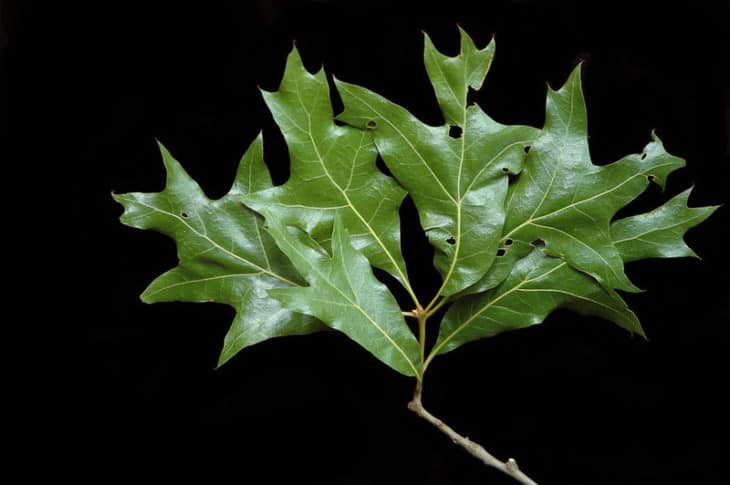
Turkey Oak is a deciduous, 98 feet tall tree with a rounded habitat decked with variable-shaped, lobed, simple, rounded, rough, dark green leaves with felted undersides. This tree produces non-showy, greenish-yellow blooms that grow in dangling female and male catkins. The blooms give way to rounded acorns with hairy, scaly cups. This salt-tolerant specimen thrives in a wide array of free-draining soils and full sun to partial shade.
5. Portuguese Oak (Quercus Lusitanica)
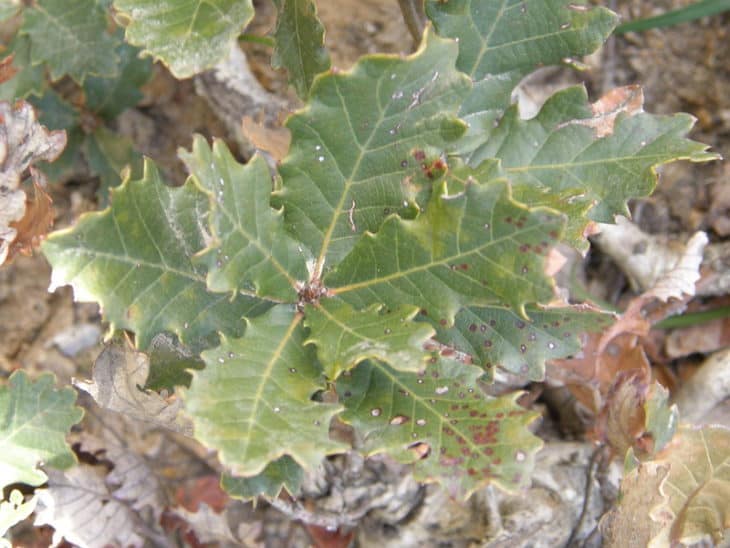
Portuguese Oak is a 65 feet tall, marcescent tree with a broad, rounded crown and a greyish-brown bark. It is decked with abundant, alternate, simple, oblong to narrow leaves with slightly oval margins and hairy undersides. It grows male and female blooms that give way to cylindrical acorns with scaly cups. This tree thrives in a wide array of free-draining soils and full sun.
6. English Oak (Quercus Robur)
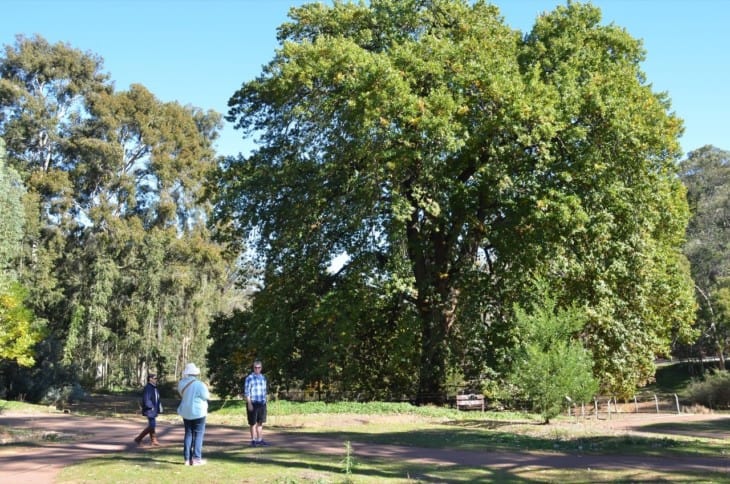
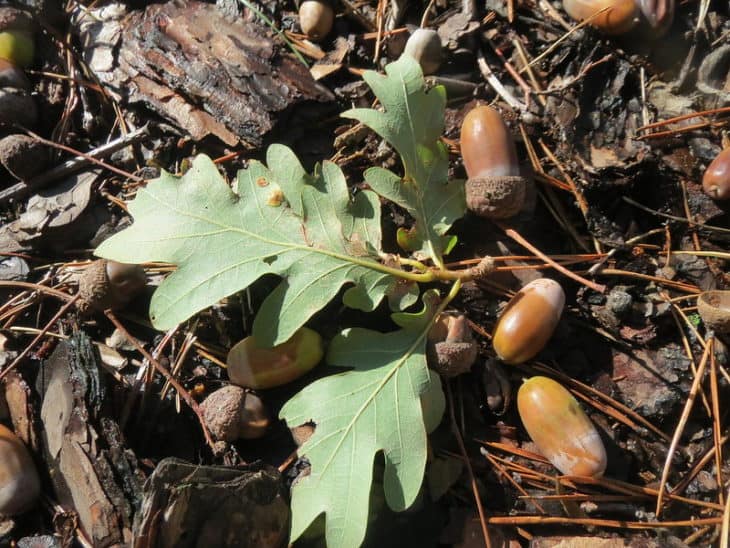
English Oak is a deciduous, 40 to 70 feet tall tree with a rounded, broad-spreading crown and a stout trunk. This tree has lobed, dark green-hued, toothed leaves with blue-green undersides. It yields insignificant, yellowish-green blossoms that grow in separate male and female catkins. The blooms give way to oval-shaped acorns. This tree grows well in well-drained, moist soils and sun-kissed locations.
7. Pin Oak (Quercus Palustris)
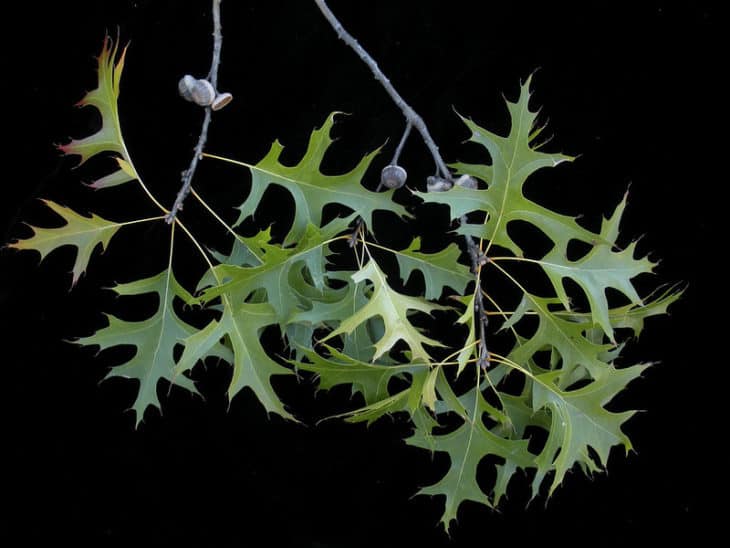
Pin Oak is a deciduous, 50 to 70 feet tall tree with a broad, pyramidal crown. This Oak Tree has ascending upper branches, descending lower branches, and horizontal middle branches. It grows non-showy blooms that give way to rounded acorns with saucer-shaped cups. This tree is decked with dark green, lobed, glossy leaves that turn deep red in fall. It thrives in acidic, moist, free-draining loams and sunny areas.
8. French Oak (Quercus Petraea)
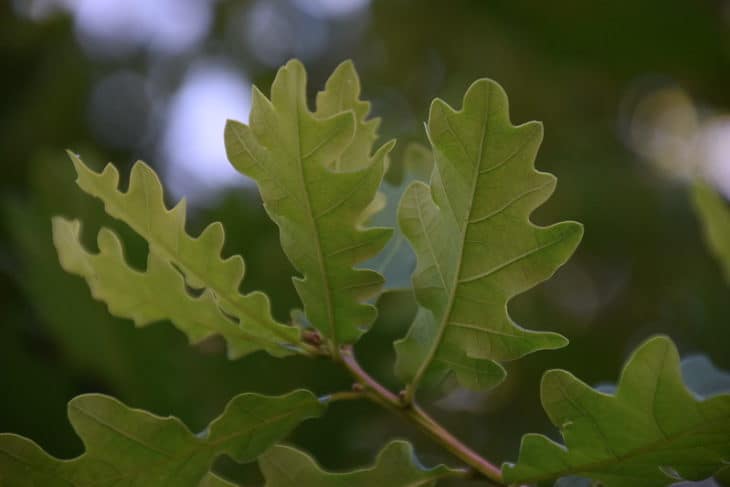
Also known as Cornish Oak, French Oak is a 60 to 80 feet tall, deciduous tree with a rounded form. It features large, glossy green, lobed, obovate, alternate leaves with hairy undersides. It produces gold-yellow, non-showy male and females blooms. The flowers give way to rounded acorns with scaly cups. This tree thrives in full sun to partial shade and well-drained loams and clay soils.
9. Mossy-Cup Oak (Quercus Macrocarpa)
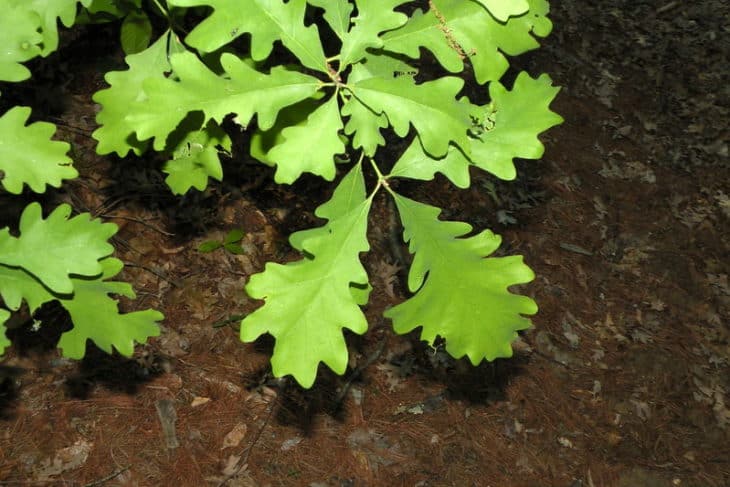
Also known as bur Oak, Mossy-Cup Oak Tree is a 60 to 80 feet tall, deciduous tree. It features a rounded, broad-spreading crown decked with dark green, leathery, lobed leaves that develop a yellowish-brown hue in autumn. It also yields non-showy, yellowish-green blooms that give way to oval-shaped acorns with mossy, scaly, fringed cups. This tree thrives in well-drained, moist loams and sun-kissed locations.

